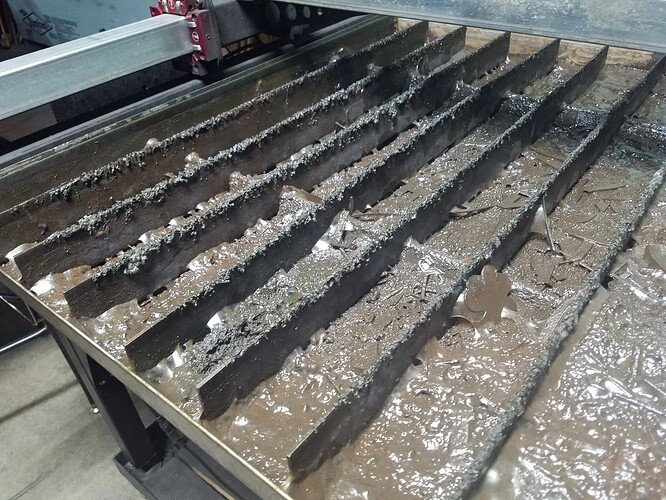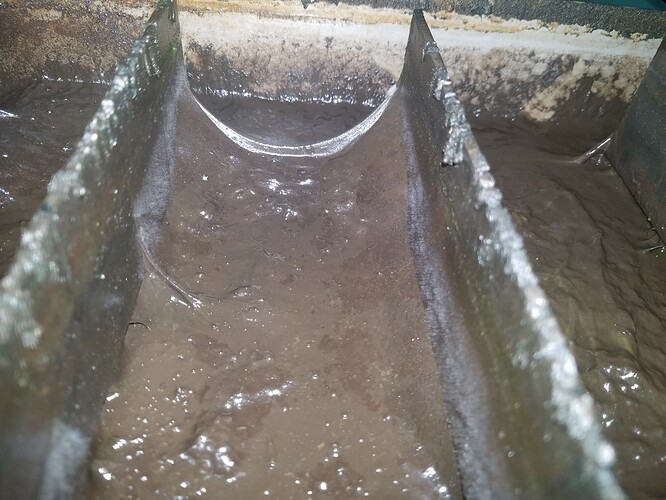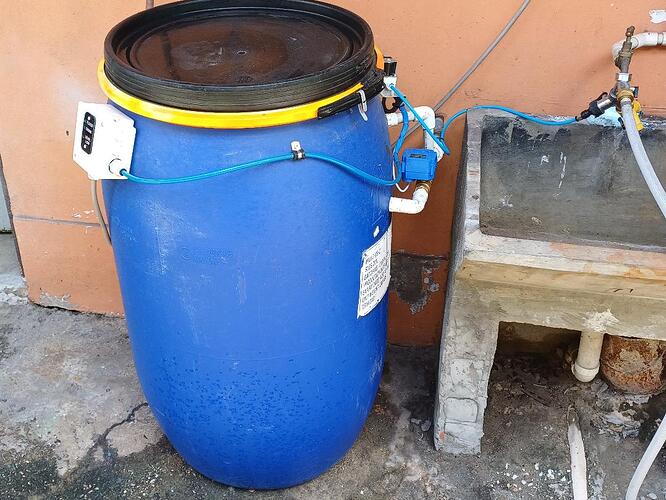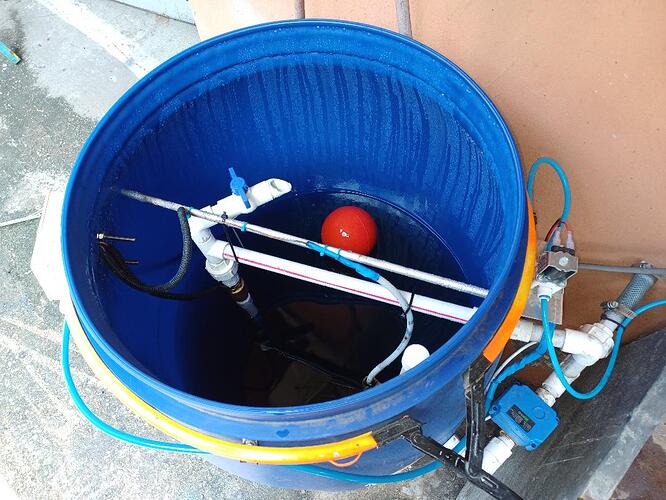How do you keep the water table from becoming a nasty pool of muck? I remove scraps ASAP and drain and change the water when I can but I still end up with an ugly pool of muck… Any ideas out there or am I just too particular?
There are different schools of thought. I use tap water and drain it and wash it out every use. Some use a plasma fluid like SterlingCool or Greencut.
I go long periods of time without using the table so keeping the table filled with plasma fluid isn’t the best option for me(evaporation). Eventually I would like to do a holding tank, but I haven’t gotten around to it yet. Also, in the winter my shop is un-insulated and un-heated except for a torpedo heater that barely takes the edge off.
I drain mine after each use and fill it with fresh water the next time. The plasma creates a lot of iron particles so expecting a crystal pool of liquid isn’t an aim of mine. I get rid of the pool of muck easily with a wet vac. I drain most of the water then vac up everything else into a bucket.
With my crossfire pro I had made a lid for the water table and I only drained it a few times a year. It would have a couple/few 5 gallon buckets of iron mud when I did drain and clean it. The lid prevented 99% of the evaporation. I’ve since upgraded to an XR and I’m putting in a drain away system.
Unless you clean your tray really regularly like 72Pony suggests, you’ll just join the rest of us who have that mess when we drain the tray. I usually drain it and let the crud dry or 3-5 days before removing my slats and using an 8" drywall knife to scrape it out. Some use a shop vac.
I use additive and still have gotten slime. I made the mistake of adding some rain barrel water once thinking the Pico Quench would kill any organics. After a few weeks, I had a slimy mess.
Ohh look. Alphabet soup.
Wow, I guess I am a bit too picky. I have invested in the green table fluid to see if I can live with the issue. I am also considering moving to stainless risers and slats to slow the propagation of rust…
Thanks for all the insight and now I see my issues are very typical…
You would have to clean the pan after every cutting session.
Yous slates are considered a consumable. Stainless steel is very expensive just to let it get cut up … they would add bling to your machine though.
I have sterling cool in my water…I keep the Ph at around 9.
next I drain it when not in use and run it through a filter to a storage tank.
I have not done anythinhg to my water in 4 years other than add a bit of water or a bit of sterling cool…
water comes up clean each time…and I just sweep out the dry table every few days of cutting.
OK, that sounds great but the only piece of the puzzle I haven’t nailed down is what type of filter are you using. I found a new 15-gallon tank and it has a pump so a bit of plumbing. some bracketry, and a filter, and I move into your level of table maintenance…
In my case I use a scotchbrite pad at the drain which will trap most stuff and use magnets stuck to the slats in the vicinity of the drain to capture most steel filings. Then use gravity in the tank to separate the rest. I don’t use a pump, I use air pressure to push the fluid up to the tank. I use a modified Propane regulator to bring my air supply down to about 2.5 psi.
If I am ever stranded on an island, I want to be on your island ‘professor’!!! ![]()
I didn’t provide complete information, however. I enclose the magnets in small plastic bags so, even though the filings are ‘captured’ by the magnets, they are easy to clean by simply pulling the plastic away from the magnet over a dustbin. No muss or fuss.
After each use? I mentally prepare myself for it’s annual cleaning (takes forever and I usually have to throw the clothes I wore away ![]() I do use the green stuff and dont deal with much rust just a big mess. I pull the big stuff out as I go along but the rest…
I do use the green stuff and dont deal with much rust just a big mess. I pull the big stuff out as I go along but the rest…
I use the homebrew formula with Sodium Nitrite as the active + a fungicide. I flood the table before each use and drain after use (1.75 minutes each way). Usually, I pull out the chunky bits as I see them and toss in the bin, My storage tank (55 gal Plastic Drum) allows the fine crud in suspension to sink to the bottom (there’s also a bunch of magnets in a zip-lock bag at the bottom of the tank), the pump (Rule Bilge Pump) pickup line is midway in the tank. The tank has much more capacity than the table, so there’s always clean coolant available to the pump.
Also, at the bottom of my water table, sits a 1mm stainless steel sheet on 1/4" thick SS spacers (5/16" SS Nuts). This acts as a primary blast-shield for the plasma jet, and a baffle for the water flowing in and out of the center drain fitting.
@toolboy Hi. Found this thread through a forum search. Really like your drain/fill system and your cart. In the video you said you did not dimple the water tables. Did you use any other type of sealant or putty on the strainer baskets? Would you happen to remember which strainer baskets you bought?
Thanks for your time.
When I had a water table, I’d clean it after each use. I used this bucket head wet/dry vac and vacuumed up all the junk.





